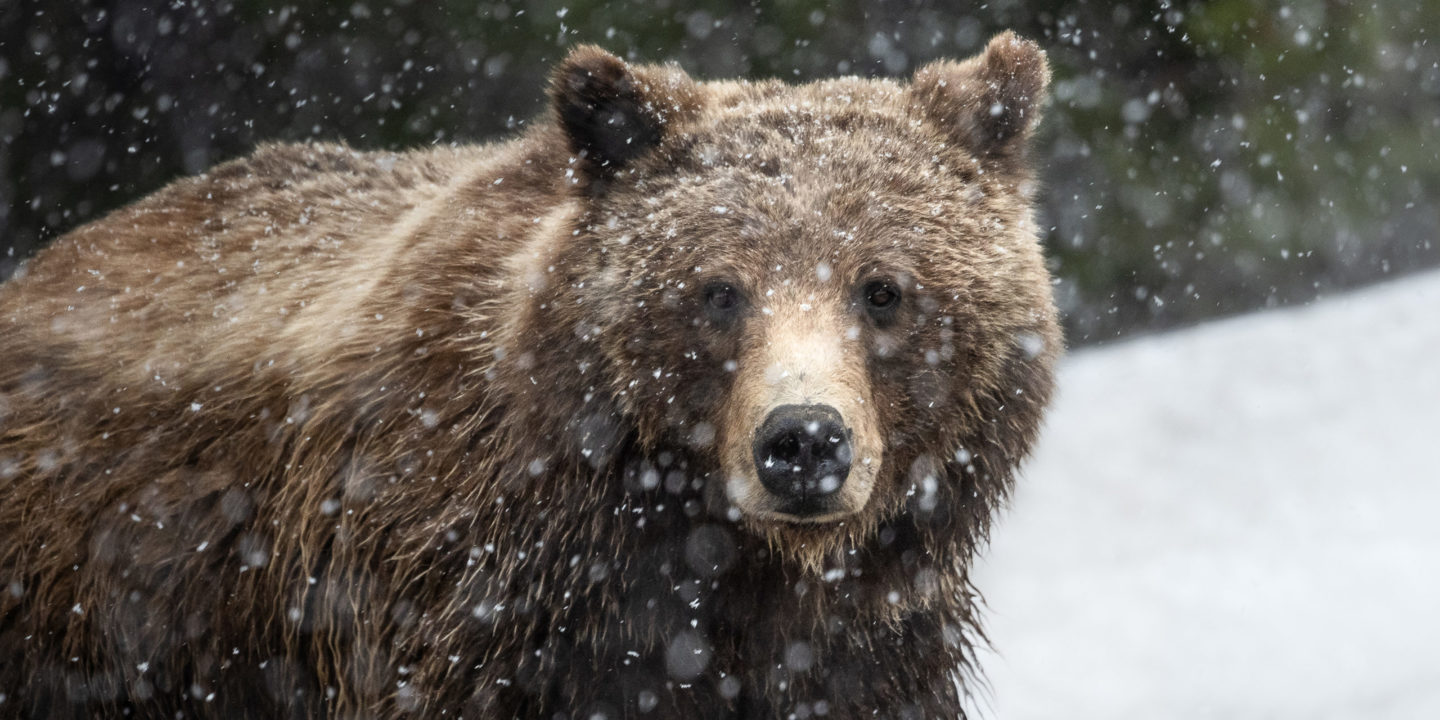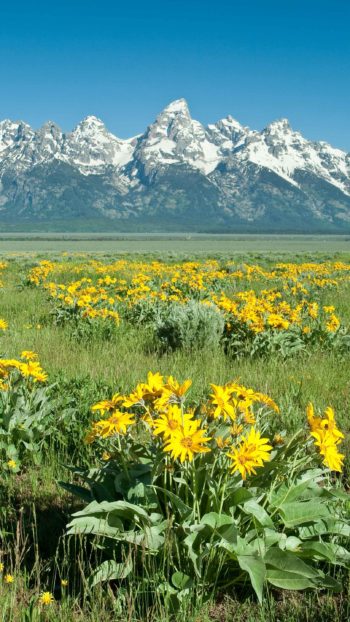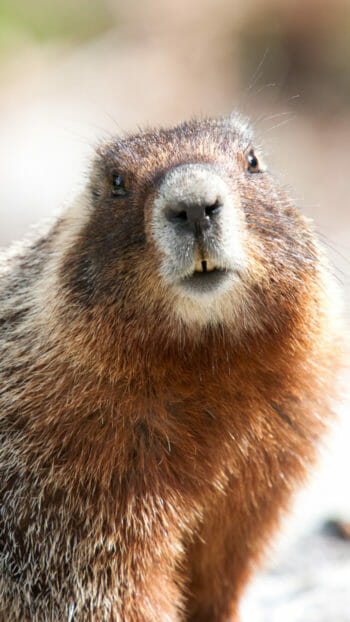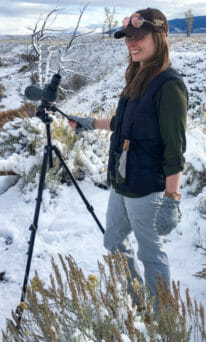The Greater Yellowstone Ecosystem is world famous for wildlife watching, and for good reason! There is an abundance of large, charismatic megafauna within Grand Teton and Yellowstone National Parks, the last ecosystem in the lower 48 that still has all of the species that lived here over 500 years ago. This is only thanks to the tireless and determined conservation efforts to ensure the survival of species whose presence are critical to the health of the ecosystem, including the iconic grizzly bear.
The GYE is home to both black bears and grizzly bears, making it a top destination for those seeking to experience bear sightings in the wild. There are many areas of prime bear habitat that allow for opportunities to encounter bears going about their natural behaviors. Black bears typically stay close to forested areas because they are fantastic climbers, and climbing trees is their first defense against a threat. Grizzlies use a variety of habitats but can often be seen in an open sagebrush field while they dig for food in the soil.
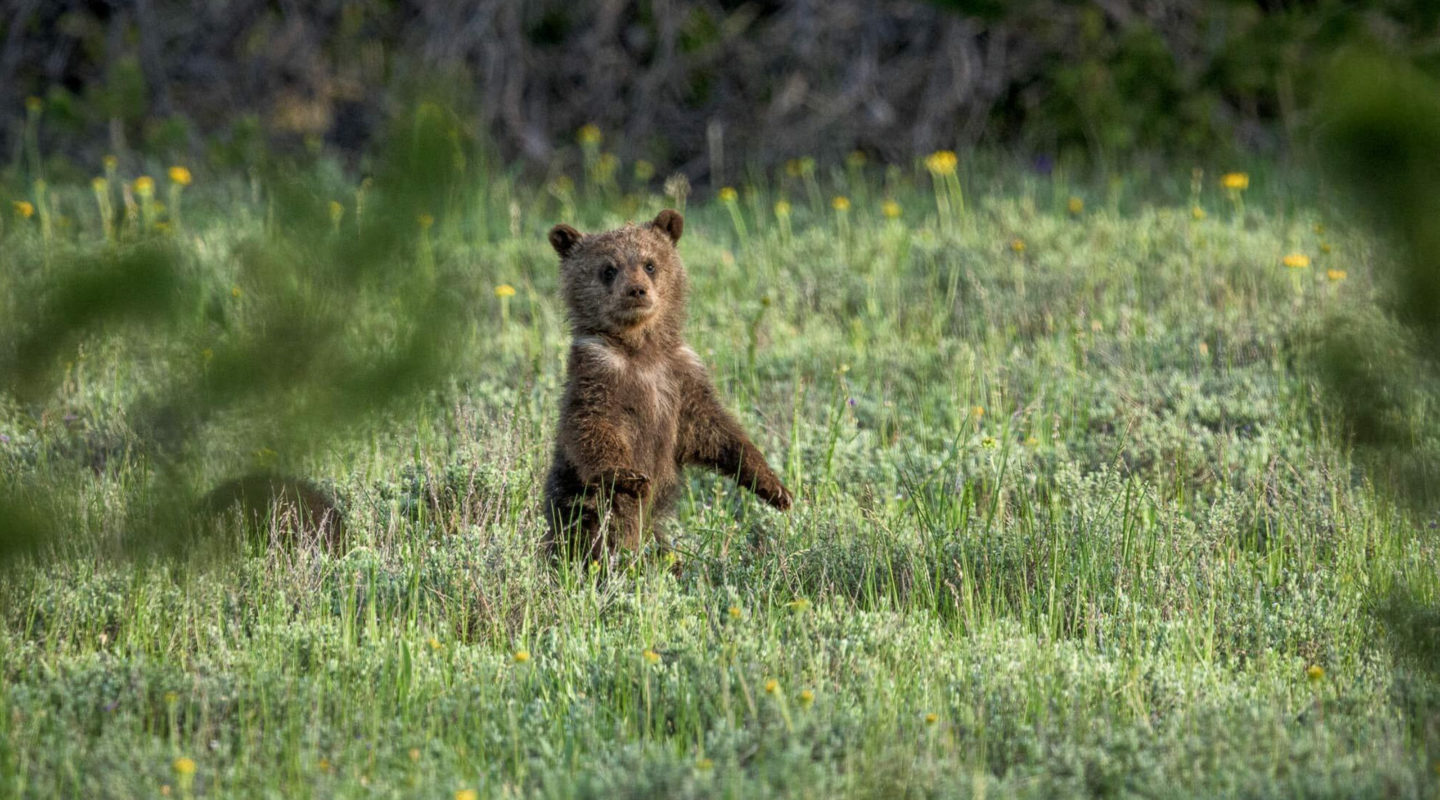
Routine of Yellowstone Bears Through the Seasons
It is important to keep in mind that bears hibernate during the winter, so visiting during this time means that you will not encounter them on the landscape. They dig dens in the ground that get buried under the snow, hiding them away. If you still wish to see bears in the winter, the Bear and Wolf Discovery Center in West Yellowstone, Montana has rescued grizzlies that do not hibernate because they are consistently fed by their handlers. You will get an up close and personal view of several of their resident bears any time of the year!
Spring is arguably the best time to visit if bears are something you really wish to see. In late April into May, bears are hungry after a long hibernation, deep snow that hasn’t yet melted in higher elevations keeping them in lower areas nearer to roadsides, and it is their breeding season! Bears are both ravenously looking for food and engaging in courtship behaviors, which provides exciting opportunities for observation. Female bears with cubs who aren’t searching for a mate are actively avoiding males as male bears instinctually kill cubs in order to make the female available to breed again. To avoid males, these female bears will stick close to roadsides as the presence of people will deter them. All of these seasonal behaviors make these months excellent for bear watching.
Summer is a somewhat different story. Temperatures rise, days get hot, and more snow melts. Higher elevations are now accessible to roaming bears, they offer cooler temperatures and provide different food sources. Not all, but many bears will move up in elevation to take advantage of these conditions. While it is still possible to spot bears in mid summer, their thick fur coats in the hot temperatures mean that they slow down and spend most of their time trying to stay cool to avoid overheating. Temperatures drop at night, so the coolest daytime hours are around sunrise and sunset. Getting up early and being in the park for dawn, or spending time in bear habitat around dusk as the sun is going down are the best tactics for bear watching.
Fall is when sightings become more frequent again. With winter approaching and the need to prepare for hibernation again, bears enter a process called ‘hyperphagia’. This is a phase where they spend all of their energy finding food and eating. They spend up to 20 hours a day actively feeding, and can eat up to 20,000 calories a day! With this hyper focus, they are less shy and forage around areas closer to people as they raid berry bushes and dig for vegetation. Black bears are particularly visible this time of year, with certain areas of the park known for reliable sightings!
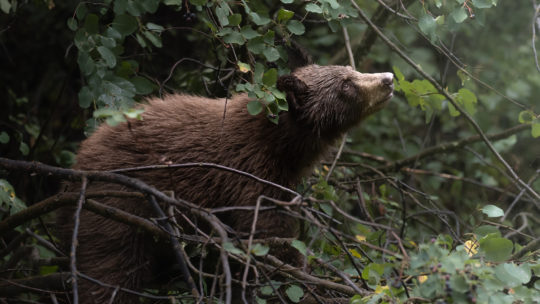
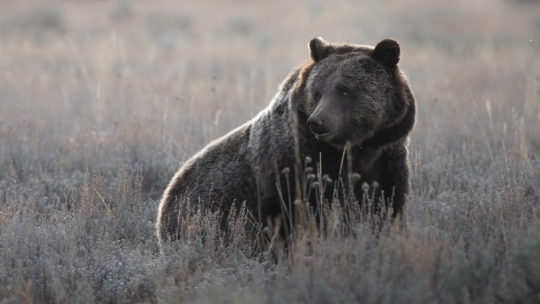
Best Bear Safaris
If you’re wondering about the best way to see grizzly bears in Yellowstone, booking one of our multi-day tours with a focus on finding wildlife is the best way to boost your chances. By spending more time in the park, particularly one as large as Yellowstone, you can cover more ground, visit more prime habitats, and have more dawn and dusk hours in your wildlife search.
Bear and Wolf Multi-Day Safaris
We offer a selection of multi-day safaris. If you’re looking for exciting grizzly bear safaris, consider our 2-Day Bear and Wolf Safari that will pick you up at your lodging in Jackson and take you into the northern range of Yellowstone- some of the best bear habitat in the region. You will enjoy early morning hours traveling through Grand Teton National Park to the South Entrance of Yellowstone. You’ll spend the whole day soaking in the beauty of the park with breaks for lunch and walks before embarking on an evening game drive to take advantage of key wildlife hours. You’ll enjoy comfortable lodging just outside the park boundaries, close enough to be back in the park first thing in the morning.
Immerse yourself into the vast landscape and have some extra early morning/evening wildlife hours in your tour by selecting the 3-Day Bear and Wolf Safari. With extra time, you’ll get to explore more areas of the park and really hedge your bets on coming across some phenomenal bear encounters. By taking a multi-day tour led by one of our passionate and experienced guides, they will provide you with the best strategy for how to encounter and view bears in the GYE by knowing just where to look and what time of day is best.
Grand Teton Wildlife Safari
If your itinerary doesn’t allow for a multi-day adventure, a half-day or full-day Grand Teton Wildlife Safari is a great way to explore the national park that is known for its grizzly bear and black bear population. Going with an expert guide who knows the best way to utilize your time puts you in the best position to witness wild bears in their natural habitat.
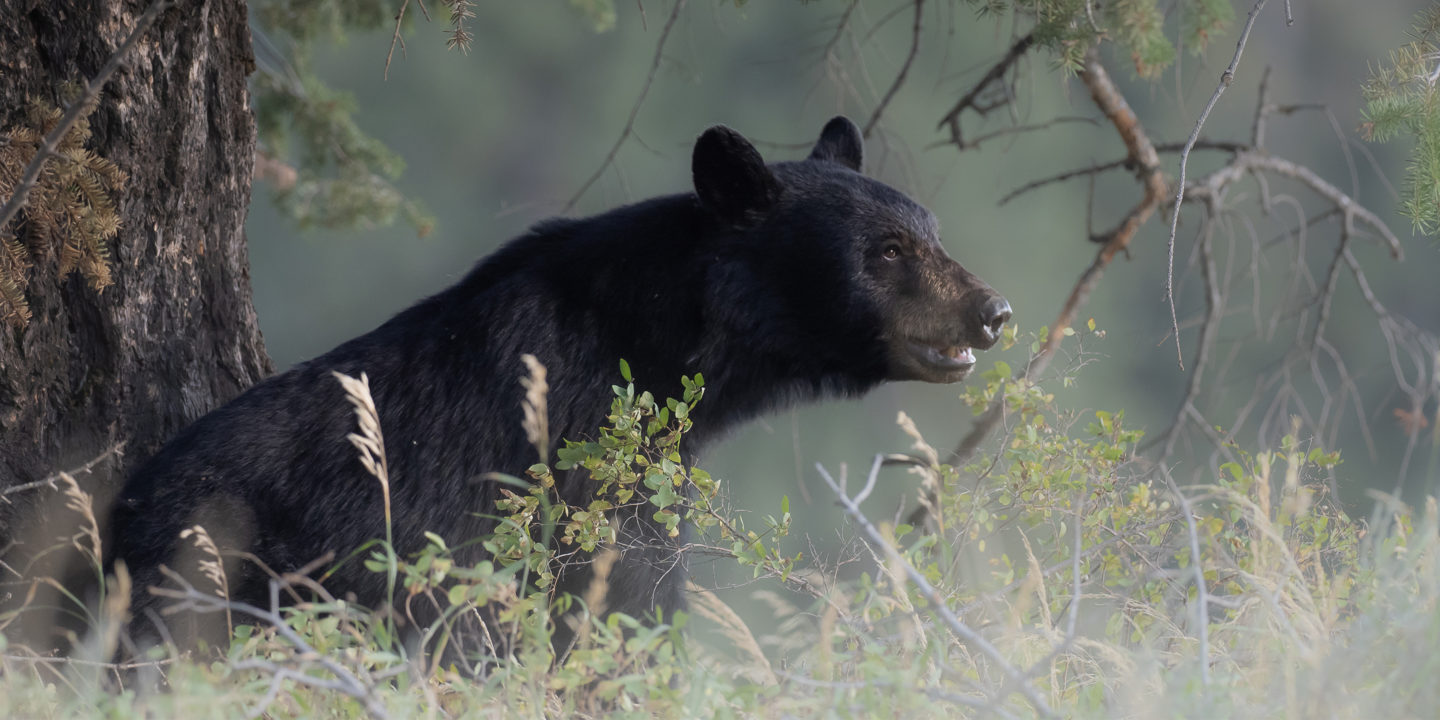
Planning Your Trip
The summer months are the busiest time around Jackson Hole, Grand Teton and Yellowstone National Parks, with July and August seeing the highest visitation numbers. Booking ahead is imperative to a successful visit whether you plan to lodge in town or in the national parks. Even campsites book up early on, so don’t delay.
To truly get the best experience possible if wildlife is your interest, plan for additional days in the park, particularly during the early morning hours. The more time you spend where the animals are when they’re most active, the better likelihood you’ll have of special wildlife sightings.
Covering both parks and taking in the wildlife, landscapes, and areas of interest of each, takes some time. Grand Teton is close to Jackson and is 310,000 acres, while Yellowstone sits about 50 miles from town with 2.2 million acres of wildlands to explore. Mountains, lakes, canyons, hot springs, geysers, and mudpots- the GYE is packed full of natural treasures to discover, and you’re not going to want to miss a thing! Plan on anywhere from 5-7 days to get the most out of your time visiting the area.
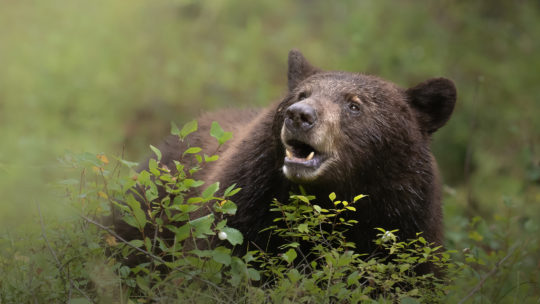
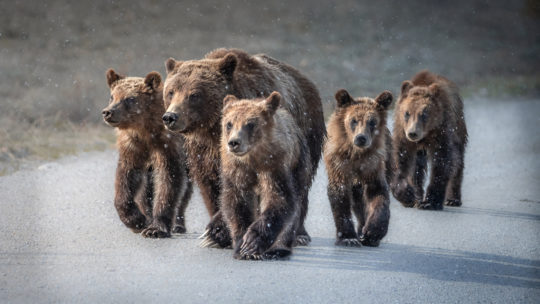
As always, wildlife is just that: wild. Every day is different, and it’s best to go in with an open mind knowing that whatever you do see will be a special experience. We encourage you not to hold a singular goal of seeing a bear be the central drive for your adventures. While bears are an incredibly exciting animal to witness in the wild, it is never a guarantee that you will see one. Being disappointed if you don’t encounter one can take away from the countless other phenomenal species and natural wonders that you will experience. Not every adventure into the national parks sees bears, but every one is incredible!
It’s never too early to start planning your travels, book now to reserve your spot on one of our wildlife safaris!

